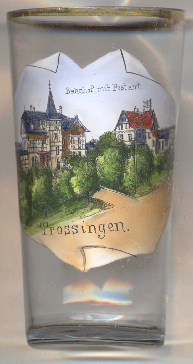

|
| DEUTSCHLAND | GERMANY |
| Bundesland: Baden-Württemberg | |
| Regierungsbezirk: Freiburg | |
| Landkreis: Tuttlingen |
 Trossingen is situated at an elevation of 699 m at the northern edge of the Baar plateau, about 18 km northeast of
the district town Tuttlingen, about 60 km east-northeast of the capital of the administrative region,
Freiburg im Breisgau, and about 88 km southwest of Baden-Württemberg's capital,
Stuttgart. The municipality has a population of about 17,500 (2024).
Trossingen is situated at an elevation of 699 m at the northern edge of the Baar plateau, about 18 km northeast of
the district town Tuttlingen, about 60 km east-northeast of the capital of the administrative region,
Freiburg im Breisgau, and about 88 km southwest of Baden-Württemberg's capital,
Stuttgart. The municipality has a population of about 17,500 (2024).
The area had already been inhabited in Celtic times. The earliest written mention of Trossingen is a document of the monastery of Sankt Gallen, dating from AD 797. In the late Middle Ages, the rulership changed hands several times, as mentioned in contracts between the Reichenau monastery and the Imperial City of Rottweil. In 1444 it came in possession of the Counts of Württemberg. Trossingen was almost completely destroyed during the Thirty Years' War (1618–1648), and also suffered heavily during the Nine Years' War (War of the Palatinate Succession, 1688–1697) and the War of the Spanish Succession ().1701–1714). During the implementation of the new administrative structure in the Kingdom of Württemberg, founded in 1806, Trossingen was assigned to the Oberamt (district) Tuttlingen. In 1827, the first harmonica was brought to Trossingen from Vienna. Since 1830, harmonicas were then manufactured here, which marks the beginning of Trossingens history as a 'music town'. The renowned Hohner factory of musical instruments was founded in 1857. In 1946, the State University Institute for Music Education at the University of Heidelberg was relocated to Trossingen. This is considered the predecessor of the State University for Music of Trossingen.
The view depicted on glass no. 4854 [left] shows the
 railway station
railway station post office
post office
[https://de.wikipedia.org/wiki/Trossingen;
https://www.trossinger-eisenbahn.de/geschichte/die-gebaeude-der-trossinger-eisenbahn/]
![[scale]](lineal.jpg)